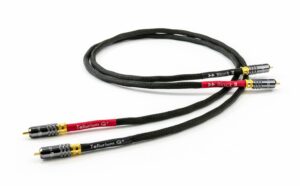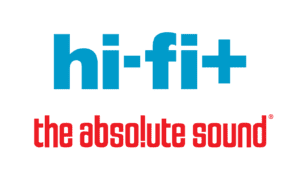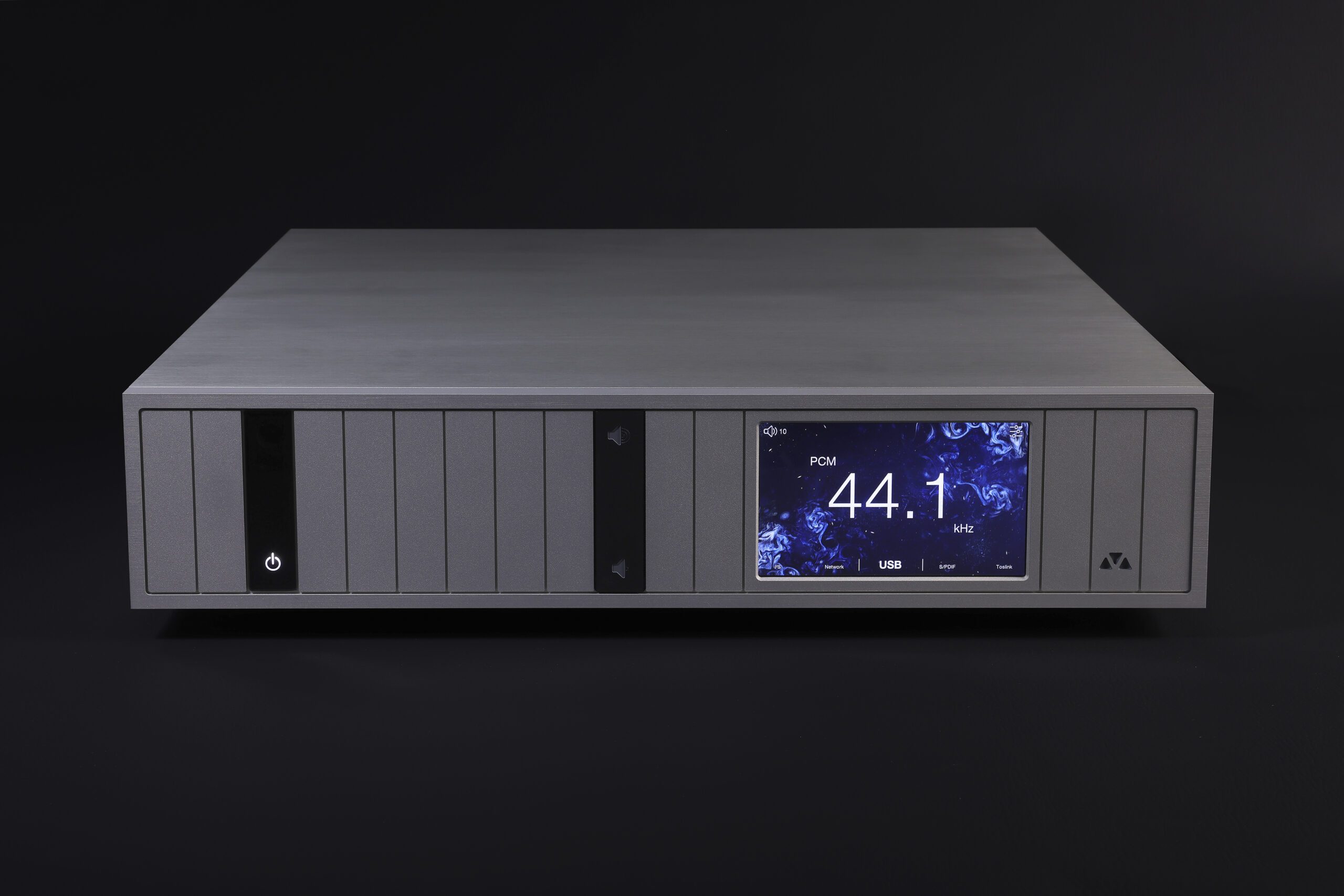
There are few parts of the audio world as contended as computer audio. From the humble USB-powered DAC to complicated devices that take the place of half your existing system, the ‘post-physical’ digital world is manifold, complicated to implement, and at times bewildering. By the standards of the rest of the audio world, the post-CD digital world is a hotbed of activity. The Toulouse-based Métronome Technologie has long been at the digital leading edge, thanks to products like its DSC.
DSC (or ‘Digital Sharing Converter’) is at the ‘flexible’ end of the modern digital audio spectrum. It’s a networked streaming preamplifier and DAC in one, allowing signals from a vast array of digital sources (basically, if you can’t find a suitable digital input out of an array spanning Ethernet, two kinds of USB – for laptop users and those with USB hard drives full of music – coaxial and Toslink S/PDIF, AES/EBU on XLR and even I2S on HDMI… then you are either trying to prove a point or are just not trying hard enough).
To the max
You could simply use it as a DAC, maxing out the volume control and pretending the network side does not exist. And in this aspect, the DSC fares well; built on an ES9038PRO Sabre DAC, the Métronome device decodes PCM to 32-bit, 384kHz, DSD to DSD512 and supports MQA. You’d be a little crazy to do this because there are other products – even other Métronome products – that do the same job, and you would be paying a healthy premium to include sub-systems that never get used in this case, but its DAC section is no slouch.
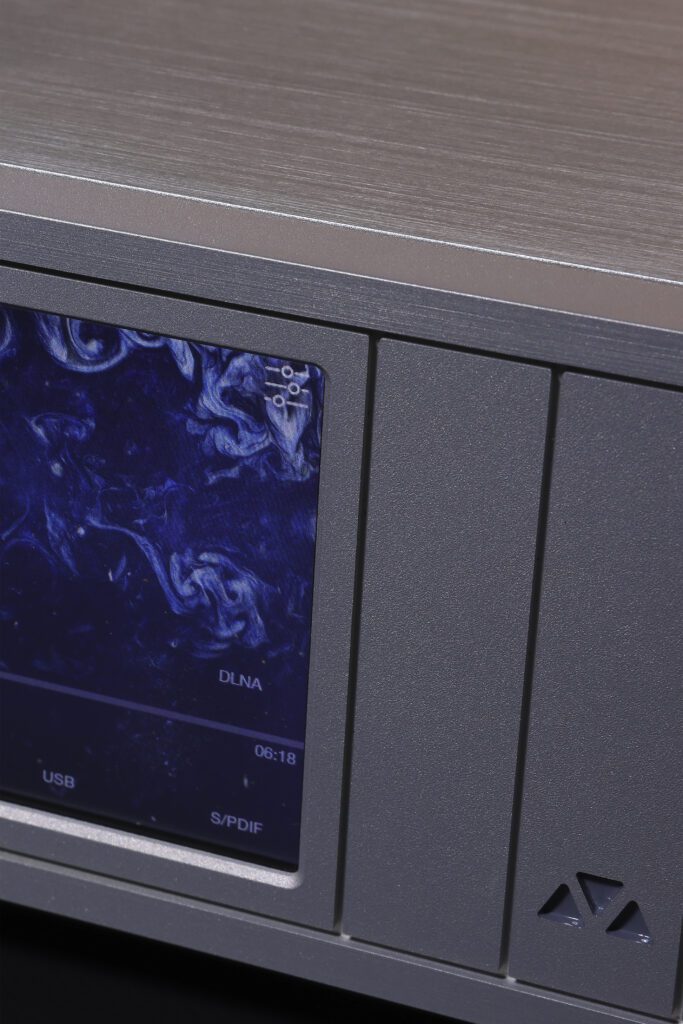
Realistically, Métronome DSC users will be looking for a single box to replace all their digital sources and preamplifier combined. This does preclude those with any analogue sources (unless they fancy a spot of digitisation first). However. it’s likely that by now, your view on analogue is either one of full embrace or total abandonment, and if the latter, the DSC ticks all your boxes for a top-end front end.
The DSC is a minimalist design with an industrial look reminiscent of some classic computer hardware architecture. You could convince someone that you’d installed a high-end blade server in your listening room, except for the absence of fan noise. However, the takeaway point from this is the solidity of the design; this is a heavily well-made product with the sort of care and attention that’s hard to find and harder to fault.
Plug & Play
Métronome also uses the term ‘Plug & Play’ in terms of its ease of use. That term was overused a few years ago and barely gets rolled out anymore. It seems appropriate here, as it is a device you insert into your system… and it’s done. This gets an order of magnitude easier if Roon is in the mix, as the DSC is Roon-ready.
Regardless of your feelings toward Roon, the DSC runs on a solid backbone of UPnP and DLNA connectivity. Wire it into your Ethernet network (you can use an aftermarket Wi-Fi dongle, but I’d argue against it on moral grounds), and if there is any kind of UPnP media server on the network, the DSC will act as its close friend, confidant and renderer. I used it with a Naim Uniti Core and the Melco D100, and in both cases, it made friends quickly.
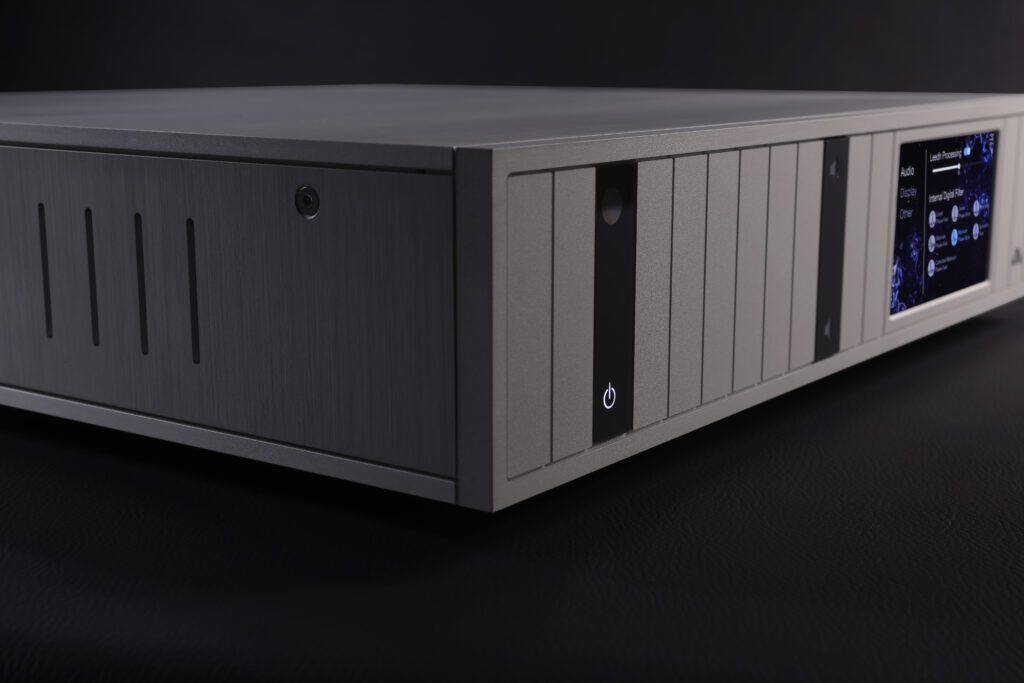
If you aren’t going down the Roon route, Métronome provides a remote handset to accompany the touchscreen and recommends the Mconnect app. I’m conflicted by this; the app is excellent, and I’d much prefer relying on this app than an in-house app that comes pre-broken, but I also think a bespoke app is a requirement at this price and performance point.
Yes, that requirement all but goes away in the presence of Roon, making an in-house app even less of a functional and practical proposition. However, for many, the control surfaces of a streamer begin and end with the app itself and by going with a third party (no matter how good), it might not show the Métronome DSC in the light in which it should be seen.
The Equaliser
Minor niggle aside, the Métronome DSC is an excellent musical equaliser, not in the ‘graphic’ or ‘parametric’ sense. It allows the user to join hands with online subscription services like Tidal, Qobuz, Spotify and Deezer, and interwebular radio through vTuner. These blend seamlessly into your local storage on computers or network-attached storage (NAS) boxes. Granted, you must sign up for these subscription services on a computer or tablet. But I don’t have a problem with this… entering your credit card details into a five-inch touchscreen (or worse, through the remote handset) breaks the minds and thumbs of modern mankind.
In a very real way, I’ve been saving the best until last. Although very well implemented, there aren’t many things that differentiate the Métronome DSC from similar streaming preamplifiers from several well-respected companies. If Métronome didn’t have an ace up its sleeve, it would still fare well against some big hitters in this hotly contested field. But there’s Leedh to contend with, and that is Métronome’s ace up its sleeve. Leedh is a French signal processing company with plans for every aspect of digital signal processing but is currently concentrating on volume in the digital domain.
Digital volume controls have (mostly) moved on from the crude truncation systems of early 24bit attenuators on 16bit digital files, but ‘moved on’ typically means ‘truncating a dithered signal’. Dithering relies on an excellent algorithm to prevent folding quantization noise into the original signal, and not all algorithms are created equal. Leedh actively minimises the number of bits used to quantize the digital signal so that the amount of information loss is reduced at the truncation stage.

This means the attenuation doesn’t undermine the performance of the signal but comes at a trade-off of fewer fine steps to that digital volume control. Put simply, if you want 0.1dB volume changes in the digital domain, you must put up with compromised digital sound at any volume thanks to quantization noise being mixed into the digital datastream. Leedh means wider volume steps but vastly improved sound quality.
Gaining ground
Leedh is gaining ground with manufacturers, with Lumin and Soulution joining Métronome taking up the Leedh challenge (and fellow French company Vermeer Audio set to follow soon). If you think the quantization noise of conventional digital volume systems is the lesser of two evils, then you’ve probably not heard Leedh at its best. It makes a solid case to be the only volume game in town!
Finally, the analogue side of things is well-covered by the DSC, with a set of RCA plugs for single-ended systems and XLRs for balanced. It doesn’t have much in the way of digital outputs. Still, with increasingly thorough Digital Rights Management systems preventing recording, digital outputs are more useful for multiroom systems than recording. Given the Métronome’s robust Ethernet connectivity, chances are if you are using multiroom, you won’t be outputting that digital signal from the DSC anyway.
The specifications and feature list of the Métronome are exciting and promising, but it still places the DSC in the middle of many rivals. Those will look to the top-end Linn and Lumin products and wonder if the DSC is just an also-ran. It isn’t.
Right where it counts
Métronome scores highly right where it counts; in the sound quality department. The company has long made a sound that is approachable, natural, and free from a lot of that detail-first brightness commonly associated with top-notch digital audio. However, it does this without smoothing over the top end of the signal or making the treble too recessed or fattening up (and slowing down) the bass. It just makes the sound less forward and musically interrogative… in a good way.
It’s an exceptionally clear-sounding device, neither warm nor bright sounding. If that character could be summed up in a single word, it would be ‘honest’. Streaming ‘Sooth Lady Wine’ by Matt Corby [Telluric, Mercury, Tidal], it gives the track that warm, lush, modern take on a 70s rock jam, but then flipping over to ‘Crossings’ by Nils Frahm and Peter Broderick [Graz, for World Piano Day, Tidal], the sound shifted to the clean, clear, chimey sound of a closely recorded piano. This is a sign of a very good device, as it’s not introducing its character into the performance.
Looking at specific performance aspects in a streamer, it acquits itself exceptionally well. It’s a detailed and dynamic performer with an extremely good soundstage in a field that, if we are being honest, doesn’t often do too well in soundstaging. That good soundstage sits comfortably wide of the boxes and appears quite deep. However, there isn’t much height information, even on classic Decca recordings where such spatial information is very well rendered (Solti’s take on Mahler’s Eighth, for example, locally streamed from a ripped CD). Given the little better than 2D sound often heard through streaming sources, this puts the DSC into the top tier. Meanwhile, the same Mahler piece is excellent at showing how much bombast the DSC can play, and it’s a lot!
Maybe most important in the Métronome DSC’s sound is how it makes music sound effortless and authentic. In that respect, it sounds closer to a good CD or even LP than most streaming devices. It moved so effortlessly from musical genre to genre that it played some poor recordings alongside some of the best without making the former sound like a dog’s breakfast by comparison. When you start listening to ‘The Sound Of The Underground’ by Girls Aloud [Polydor, Tidal] and thoroughly enjoying it as a damn fine pop record rather than getting a little snooty about the level of compression they used some 20 years ago, you know you are on to a bit of a winner.
Do it well
The more you listen to music through the DSC, the more you want to listen to music. That’s what the DSC does so well; we get so obsessed by high quality sound and the noises it makes, we often forget that behind all that, you need to have something that sounds good, and the DSC sounds damn good.
Another way to highlight the DSC’s quality is that it stands up to comparison. The comparison that few people are making is a like-for-like with CD. As something of a Brexit-meets-COVID bonus, I’ve been able to hold onto the excellent Gryphon Ethos CD player for far longer than I expected or deserved, but it indicates just how good CD can be. It’s difficult to ‘fess up’ to, but except for a few cases, when you play a CD against a ripped and streamed version of the same recording, the CD comes out on top. Only a handful of streamers get close to being on par with a very good player, and I’d struggle to find any streamer that takes on CD’s big guns and wins.
Perhaps it’s because Métronome’s sister brand Kalista makes one of those big guns of CD, but the DSC gets closer than most to that CD ideal. Compared with most streamers, the sound of streaming is flat and uninspiring. A few streamers give CD a run for the money with a more exciting and exuberant, and the Métronome DSC joins that select list of streamers that make the grade. This might sound like a hollow victory (a 21st Century format that finally outperforms a digital format that’s about to celebrate its 40th birthday), but it’s a victory, nonetheless.
Follow the Leedh-er
Finally, there’s that extraordinary Leedh volume control. It changes the game, getting you about as close to the music as possible. The closest we get to sound this good is with a passive or an autotransformer preamplifier. You might not think about how vital volume control can be until you hear just how good the next generation will be.
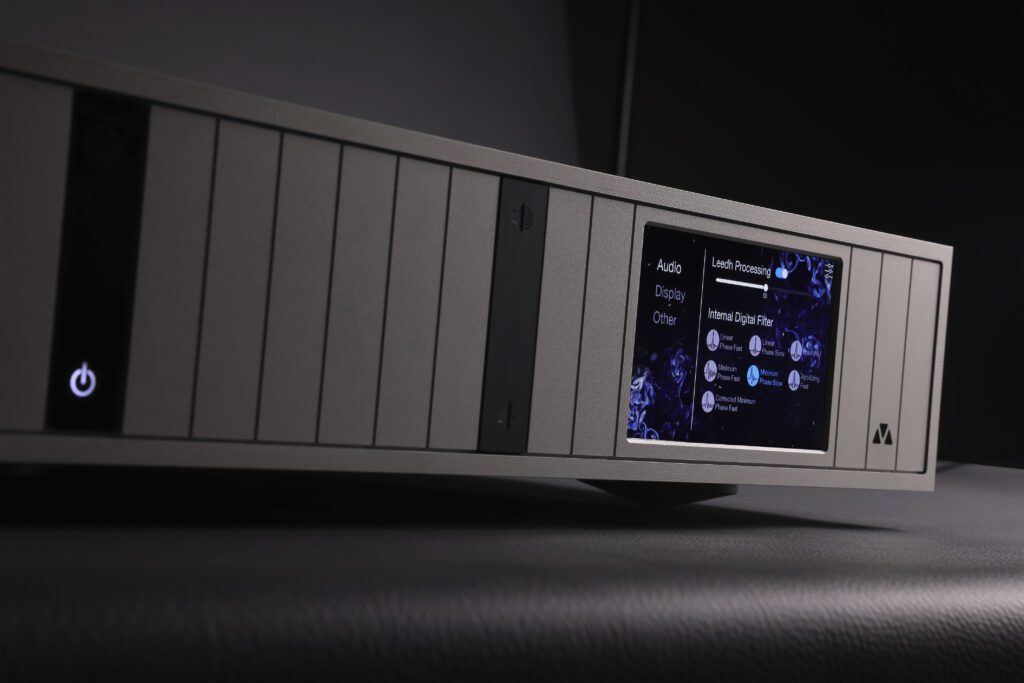
The two significant elements this volume control system brings to the sound are invisibility and consistency. You realise a couple of bars into a record that the pinch-point in audio is the volume control, and the Leedh concept just takes that away. This ties into the consistency issue, as the performance doesn’t change at any volume level. While there are more characterful and more immediately impressive streamers, this one stands with the best.
Many streamers seem to follow that quote by conductor Sir Thomas Beecham about the English; “they may not like music, but they absolutely love the sound it makes.” The Métronome DSC complete streamer/DAC/preamp system is one of the rare exceptions. It’s honest, accurate, neutral and above all, enjoyable. It’s a lot of money for a digital preamp, but you also get a lot of preamp for the money.
TECHNICAL SPECIFICATIONS
- Type: Digital Streaming Preamplifier/DAC
- Digital inputs: 1 Ethernet connector, 2 USB connectors, HDMI I²S (PCM & DSD), S/PDIF RCA, AES/EBU XLR, Optical Toslink
- Analogue outputs : Unbalanced adjustable gain @0dB 100 Ohms – RCA, Balanced adjustable gain @0 dB 2 kOhms – XLR
- Resolution: 32 bits/384 kHz DSD 64 to 512 (eq. frequency of 22.4 MHz)
- Dynamic range : -137 dB
- Distortion + noise : -122 dB
- Internal Processor: 32 bit
- Frequency bandwidth: 32 to 768 kHz
- Bandwidth: 10 Hz–20 kHz +/- 0.1 dB –
- Dynamic range: 127 dB
- Unbalanced adjustable gain: @0dB 100 Ohms – RCA
- Balanced adjustable gain: @0 dB 2 kOhms – XLR
- Dimensions (W×H×D): 430 × 105 × 430 mm
- Weight : 17 kg
- Price: £24,000
Manufacturer:
Métronome Technologie
UK Distributor:
Airt Audio
+44(0)1354 6525666
By Alan Sircom
More articles from this authorRead Next From Review
See all
PrimaLuna EVO 100 phono preamplifier
- Apr 22, 2024

Reiki Audio SuperSwitch Master Pro + Servant Pro
- Mar 27, 2024

Melco Audio N1-S38 music server
- Mar 27, 2024








